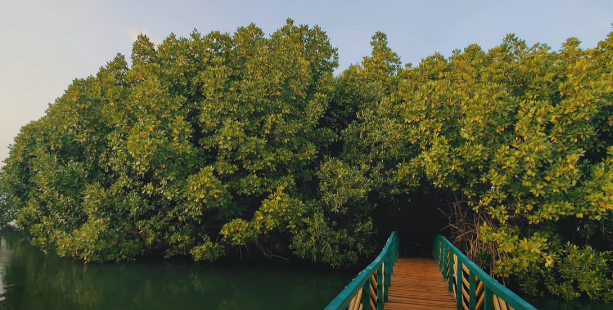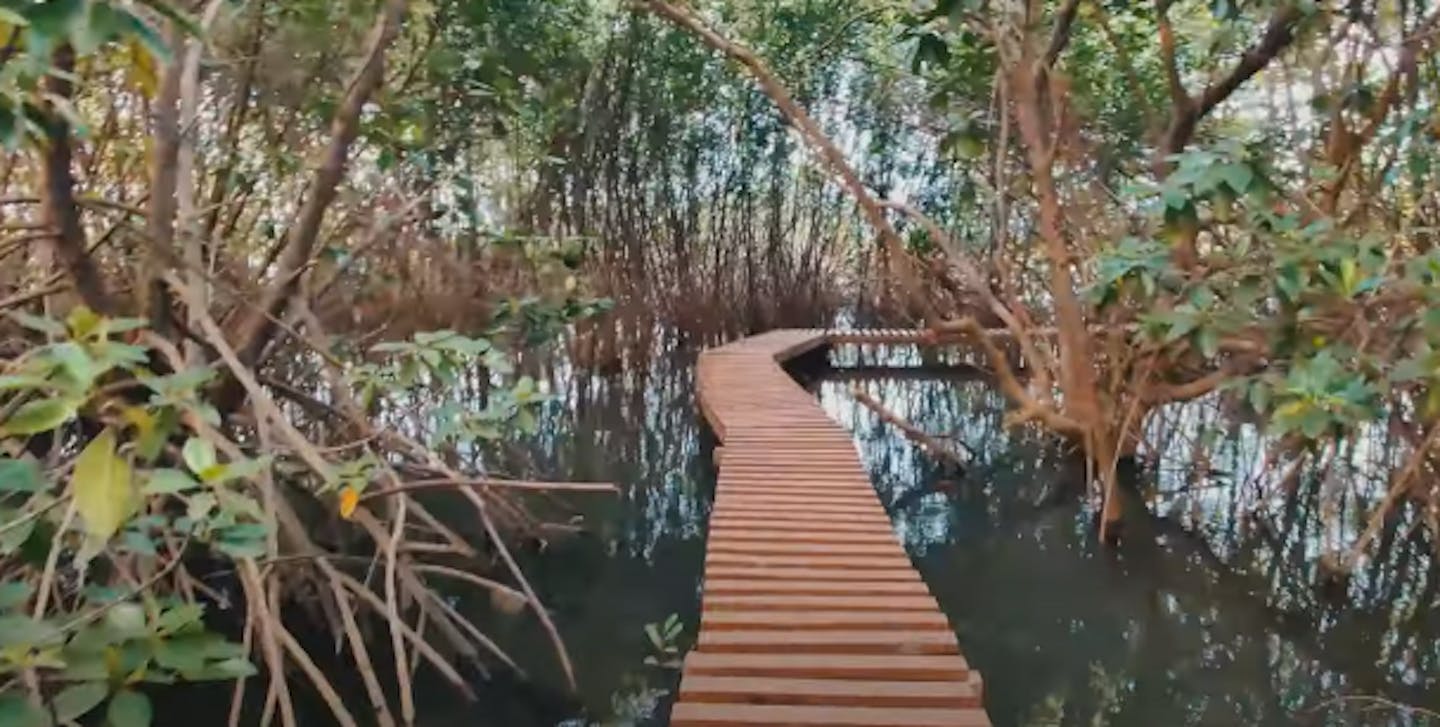Locals of Karnataka, India spearhead efforts to save and restore mangroves
- Nature Conservation
- Ecosystem Restoration
- Wetland Restoration
- Indigenous Tenure
- Blue Carbon
- Mangrove Restoration
- Indomalaya Realm
For the coastal communities of Karnataka, a region in southern India, there is no closer relationship than that of locals and local mangroves. Karnataka is home to over 300 hectares of mangrove forest distributed over three coastal regions with a manifold of smaller dispersed regions discovered as recently as 2016.
Karwar, located in Karnataka, is a waterfront city that lies on the mouth of the Kali River. Karwar residents have been fiercely protecting mangroves from exploitation. For example, destructive industrial activities have released toxic chemicals and polluted local water bodies, causing pH imbalances and disrupting the mangroves.
“The nuances of a functioning mangrove ecosystem are extraordinary. Everything from the nutrients supplied by forest detritus to specially adapted aerial and salt-filtering roots makes mangroves a truly unique ecosystem,” explained Bharat Yadav, a mangrove specialist from Lucknow University in India.
However, Yadav said that even the smallest changes can disrupt these delicate mechanisms, thus affecting countless lives. Mangroves play a predominant role in Karwar’s culture and history and the inhabitants of Karwar rely on the mangroves to sustain themselves. Not only do they serve as important habitats for a diverse array of marine life, but they also act as a major source of food and employment. They also protect vulnerable coastal communities from the devastating impacts of climate change.
Locals believe the forests to be sacred and their water to have healing powers. In 2011, the Forest Department declared the Karwar mangrove a ‘Pavitra Vana’—a sacred forest in English. For many locals who cannot afford biomedical medicine, the medicinal herbs found exclusively in the mangroves have become a critical cure to common and chronic ailments such as fever, colds, asthma, and supposedly infertility. Knowledge about many of these medicines have been passed down through generations by the practice of Ayurveda, an alternative medicine derived from the Indian subcontinent.

While damaged and developing regions of the mangroves are closed to the public, while mature regions are closely monitored, yet open to the public, like this one in Honnavar. Image credit: Courtesy of Ishita Yadav.
Under such circumstances, the locals of Karwar in collaboration with local non-profit organizations and government entities are undertaking large-scale reforestation of local mangrove species through monthly reforestation drives. The majority of the task force comprises local volunteers funded by local governments and grassroots organizations.Reforestation efforts have been ongoing since 1990. However, in the aftermath of the 2004 North Indian Ocean cyclone, locals have engaged more actively in afforestation initiatives.
"The mangroves hold deep religious, cultural, and sentimental value for us. This pushes us to contribute to the mangrove afforestation. I have been involved in it for the past six years," explained Manjunath Prashant, a member of Karwar’s mangrove reforestation task force.
In Honnavar, a port town in Uttara Kannada, locals have been also fighting their own climate battles by protecting and rejuvenating the mangrove forest. Mangroves play an important role providing nurseries for fish, crustaceans, and shellfish; and supply trees for fuelwood, charcoal, and construction lumber in Honnavar. The trees’ roots serve as a natural filter, purifying water from heavy metals produced by nearby factories. They also helps prevent erosion on coastal areas, and protected communities during Cyclone Tauke and Cyclone Yaas, severe tropical cyclones that occurred in 2021 in the west coast of India.
Honnavar’s Indigenous communities have developed a strategic plan with the local government. The goal is to conserve and recover mangrove forests from their current critical state. The strategic plan includes establishing conservation zones, fishing quotas, and restricting tourism inside the mangrove forest. For instance, damaged and developing regions of the mangroves are closed to the public, while mature regions are closely monitored, yet open to the public.
“We have planted over 14 species of fast-growing mangrove trees to reforest damaged and new regions,” described Mukti Shetty, the first woman to lead a mangrove planting initiative in the region.
Mangrove ecosystems are of utmost ecological importance worldwide. Although mangrove forests cover a mere 0.1% of our planet’s land surface, they sequester about 24 million metric tons of carbon in soil per year, four times as much carbon as any other type of forest. Karnataka’s mangroves are not the only ones at risk. All unprotected mangroves could disappear in the next 100 years. A UNESCO study stated that mangroves are among the most threatened ecosystems on Earth. In 2017, the UN reported a 67% decline in mangrove cover globally.
Village forest committees in Karnataka have demonstrated extraordinary commitment to preserving these vital socio-economic resources. Likewise, they are continuously working on rejuvenating the mangroves through the COVID-19 pandemic.


